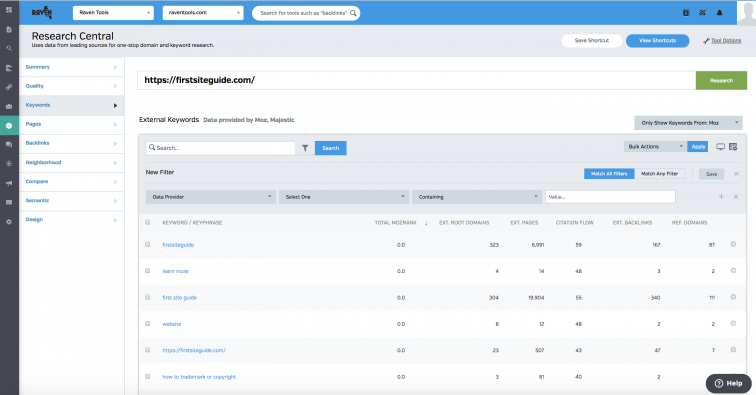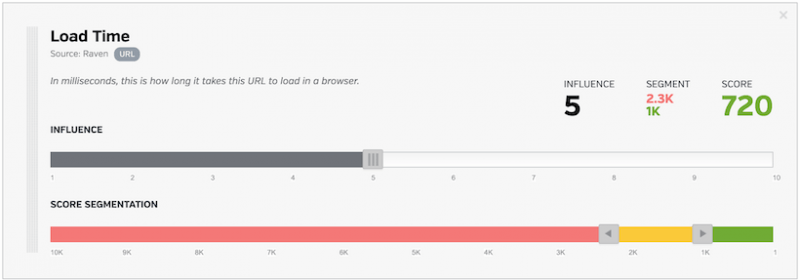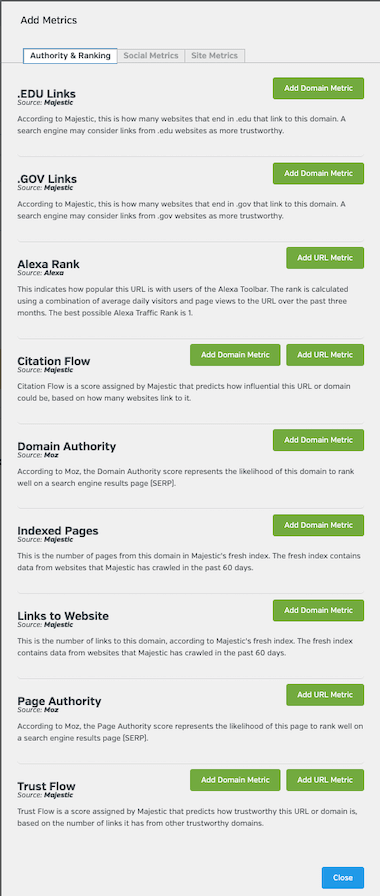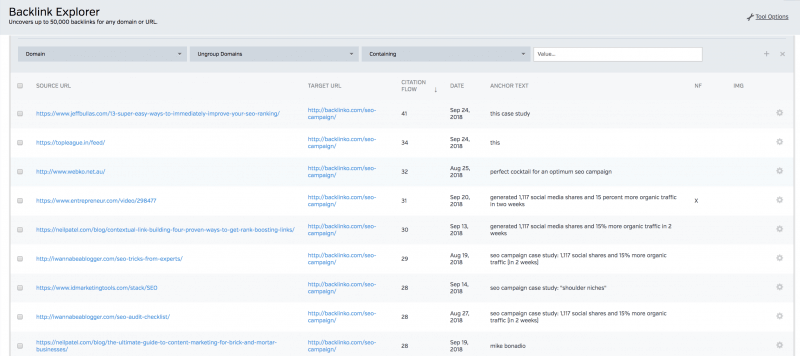Working in SEO isn’t easy – even if you understand SEO.
You’re always at the mercy of the overly dominating Google that seems to change it’s algorithms and ranking factors regularly.
And trying to toe the line between what your clients want and what you know are best practices takes balance. A lot of balance.
Wouldn’t life be so much easier if you didn’t have to deal with SEO clients?
With rank and rent SEO, you simply rent out your website. Sounds nice, right?
What Is Rank & Rent?
“Rank and rent” is a type of SEO where someone optimizes a website for a local business, like a plumber, roofer or an electrician, and then rents the ranked website to other local service providers that want those leads. Rank and Rent is just another word for selling leads to local businesses.
Rather than taking an existing site built and working to get it to rank within the search engines, rank and rent practitioners build new websites that are tailored to a niche instead of a business. They still perform all the typical tasks that go into helping that website rank with the search engines – create content, do on-page optimization, build a backlink profile, etc.
Once the website begins to rank and draw traffic, the SEO professional rents use of the website – and, along with it, the leads that the website draws in – to an actual business. The tricky part is to understand how to set up your call forwarding and call tracking to properly forward leads. You aren’t a plumber, and people are calling you for plumbing services – so this is where SEO meets some cleverness. You should be able to recognize a Rank and Rent website by the fact that the site is incredibly generic with all its information.
The business that rents from you will get the benefit of a pre-built, already-ranking website that’s bringing in traffic and the SEO gets money from the website’s rental. Service companies love this because its a no-risk investment into an SEO property.
Another method of rank and rent is for the SEO to sell the warm leads to local businesses rather than renting out the website.
What Are the Benefits of Rank & Rent?
For many SEO professionals, rank and rent holds the promise of steady money without the need to deal with client work day-to-day.
The SEO gets to create and optimize the website based on their own views of the best practices instead of having to work within a client’s requests, and still gets the income. While you are in the process of ranking the website, you have full freedom to make the decisions without having to report to the client at every dip in the rankings or change that’s made.
On the flip side, the person renting the website or buying the leads gains all the benefits of an established niche website without having to wait for the results. A good SEO professional can be expensive, making the decreased cost of renting an already-optimized website very attractive.
Why do Rank and Rent?
There are multiple reasons that an SEO expert might use Rank and Rent as an income generating stream – such as:
- Creating an opportunity – new SEOers will generally find it hard to secure clients initially, so they will have ‘dead’ hours where their productivity could be used in other projects. Rank and Rent allows that time to be used efficiently and can help those newbies with building a portfolio of proof/evidence of their SEO skills
- Trust – a large number of businesses have difficulty in trusting SEO professionals because of anecdotal stories of poor performance or snake oil salesmen in the industry. Through Rank and Rent, however – the evidence is already there so it’s merely a case of selling the lead access to the relevant business
- Increased efficiency – as you own the domain and website – your SEO investment will be your’s long term. Whilst with local SEO business can close down, stop using your services, etc- with Rank and Rent instead of having to build another client’s rankings you can instead just re-rent out the site to a new operator.
You can also monetize rank and rent SEO in a variety of ways.
Rank and Rent allows for a hybrid approach to monetization – which takes revenue options from local SEO, affiliate marketing and e-commerce. Some of the most popular forms of Rank and Rent include:
- Flat Monthly Rentals – just like a property, you can rent out your website at a flat monthly rate. This can be the simplest method, with minimal requirements on either parties other than monthly invoicing/setting up direct credit card payments. Setting your price in this method will generally be based around providing an estimate of the average number of leads per month and then showing the equivalent price per lead basis.
- Per Lead – more complex than a flat rental agreement, you charge the business per lead generated. Whether this is via phone calls, email or contact submissions. You will have to use monitoring software to track the types of leads coming through, as well as have quality control so the end business doesn’t pay for unrelated spam leads. This method can be popular for some operators as it requires a smaller investment on the businesses part before they start seeing results, but will generally be more expensive in the long run and require the SEO professional to invest time each month on administration
- Rank and Sell (website flipping) – Unlike the other options which are built around creating recurring revenue, Rank and Sell is based on selling the end ranked website for a lump sum payment for transferring ownership of the website. This strategy can allow an SEO expert to quickly gain access to significant amounts of capital in a short period of time – as the average Rank and Rent site can sell for 24-36x the average monthly rental amount. Depending on your local tax codes, there may be preferential tax benefits in selling the asset instead of receiving a rental income. In this strategy, the SEOer will continue building different/new Rank and Rent websites to sell in the future.
Key Local SEO Lessons for your Rank and Rent Website
GMB has three primary factors – Build your entity, create content, and get traffic.
City Landing Pages:
Here’s one more tip that is overlooked by many. City Landing Pages.
A quick template for getting this done:
- Check your area or sphere of influence using the standard map-pack keywords or using a tool like Raven Tools Local Rank Tracker or Local Falcon.
- Cast your net wider than this area of influence.
- Get a Google map login.
- Get the custom map directions done either with fancy graphics or the traditional way – use all local landmarks, bus, train, airports, city center.
- Now have nice content written for all the local areas.
- Sprinkle keywords in the content.
- Add great photographs. Alt attribute – again local keywords
- Embed your custom maps with the URLs in the Local city page content using Iframe or any other tech your developer is comfortable with.
- Link the city pages to your key pages or have a CTA for directions to a store, clinic, etc.
These are some short tips. If you’d like some additional tips for local SEO, I’ve also gathered expert advice from 7 figure local SEO experts in our learn SEO blog post.
How Do I Get Started with Rank & Rent Websites?
Rank and rent SEO sounds great and possibly very profitable, but do you have to be an SEO expert to make this method work for you?
No, you don’t. You just need to be willing to roll up your sleeves and work, waiting for your website to be ready to rent before you make any money off it.
Follow these 7 steps and you’ll be well on your way to creating your first rank and rent website:
Step 1: Pick a Profitable Niche
Rank and rent is not going to work for every niche.
When deciding on the niche you want to create your website for, you need to choose a niche, keeping the following points in mind:
- High-ticket: If you choose a low-dollar niche or one where leads are a dime a dozen, renting out the website or selling off the leads isn’t going to bring in that much money for you.
- Low competition: Sites in highly competitive niches are far more difficult to get to rank. Choose a niche with a lower amount of competition so you can make some quick headway, keeping the process less frustrating for you.
- Good geolocation: Big cities and metro areas can be enticing due to the larger populations, but all those people can be deceiving. If you choose a very large city, you’re also competing against far more well-established businesses.
- Quick sales cycle: This is most important if you’re planning to sell the leads than it is if you’re going to rent out the website. You want to be able to have a steady stream of warm or hot leads, ready to buy now that you can pass along to your clients.
Think long and hard about what you want to create for your first rank and rent website. You’ll be spending a lot of time working with this site, as you’ll be learning as you go.
If you’ve got a list of potential niches and geolocations, save it for later. You can always build more rank and rent sites as you get used to the process.
Step 2: Choose a Domain
Your next step is picking a domain name for your site. You want it to be specific enough that you can build in your niche- and geolocation-related keywords, but generic enough that you’ll be able to sell it to someone down the line without interrupting their current branding.
The best way to choose a domain name is to create a combination of your main keyword and the location you’re targeting.
For example, if you are looking to create a rank and rent site for emergency towing in Houston, possible domain names could include “emergencytowinghouston.com” or “houstonemergencytowing.com.”
Step 3: Analyze Your Competition
Do not skip this step in the process. You’re trying to rank a non-branded website in a highly profitable niche, and you need to know what others are doing that’s working.
Begin by typing your main keyword and target location into a search engine. Write down the first three non-paid URLs. These will be your main competitors.
Login to your favorite SEO research software, such as Raven Tools. Type the first competitor URL into the search bar and wait for the software to analyze it.
Gather as much information as you can about your competition. Some main things to look for include:
- The top-performing content on each site
- Their highest-ranking keywords
- The backlink profile
- Their traffic from organic search
- Use Research Central to find all the information you need.
Once you’ve got all this data, take a look at each competitor website. Look at how each site is designed, and see if you can find any similarities in layout, calls-to-action, color schemes, or imagery.
Study how their sites are organized, how the content is laid out, and what elements are present on each page. See if you can figure out who the target market for the site is.
This information will be crucial as you move forward with building your own site, as you want it to stand out from the crowd but not so much that it will turn away users.
One of my favorite tools to look at a competitor’s URL, is to create a custom website URL quality grader by bringing in Raven metrics, Alexa, Moz, and majestic metrics – so it’ll look something like this:
Set the influence a particular metric has, and then segment the score to show what is good, ok, or bad.
Add whatever metrics you’d like, then get a composite score based on the metrics you’ve chosen.
Step 4: Keyword Research
Now it’s time to figure out what keywords you will use on this new website that will bring in the traffic you’ll pass on to your renter.
Again, even though you don’t know the specific branding of the business that will eventually inherit this website, you’re looking for the high-traffic, high-conversion keywords that will bring in visitors.
Because you are creating a site from scratch, your keyword research will be heavily based on what you know of your chosen niche and what your competitors are already doing.
To begin, type your main seed keyword into your SEO research tool’s keyword planning section. This will bring up a wide variety of keywords related to your website, many of them long-tail and perfect for internal services pages or blog posts.
Think about what keywords seem most relevant to your overall niche and target area, and use them to build out your strategy.
Your site’s keywords are important because you will track keyword rankings as you go along, and you’ll use those rankings to help sell your site as a potential “rental property” to a business. Know what keywords you’re targeting with each page and keep an eye on how they perform.
Step 5: Create Killer Content
You’ve heard the phrase: Content is king.
This is especially important when you’re trying to rank a non-branded website. Because your rank and rent site doesn’t have any brand authority (yet), you need to be sure that the words on each of your pages builds in strong keywords, is laser-focused on the user, and provides helpful information.
Start by creating your core pages. Your Homepage, About Us page, and the pages for your niche’s main services absolutely must be included on your website. These pages will bring in the most traffic and the most potential qualified leads, so making sure they are well-written and fully optimized is important.
Once you’ve got those pages nailed down, consider creating some blog posts.
You can always add more as you go along to help improve your site’s rankings and visibility, but getting a few informative, interesting, relevant pieces can help you gain some ground quickly.
Adding engaging elements, including images, video, infographics, and downloadable assets can help your content get more traffic and shares, ultimately making your site more successful.
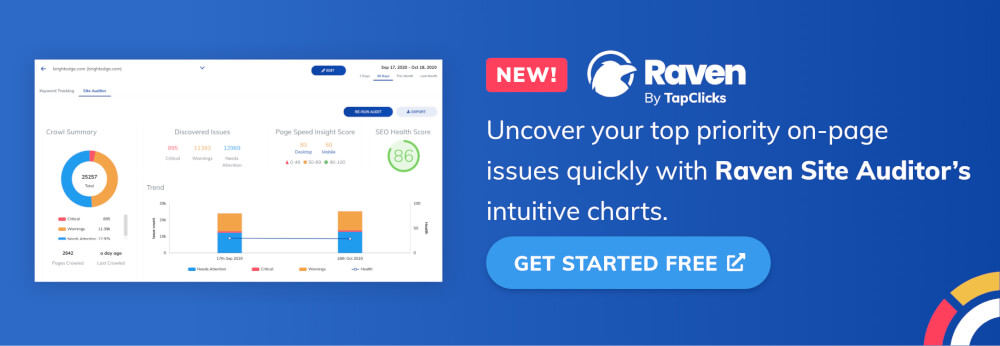

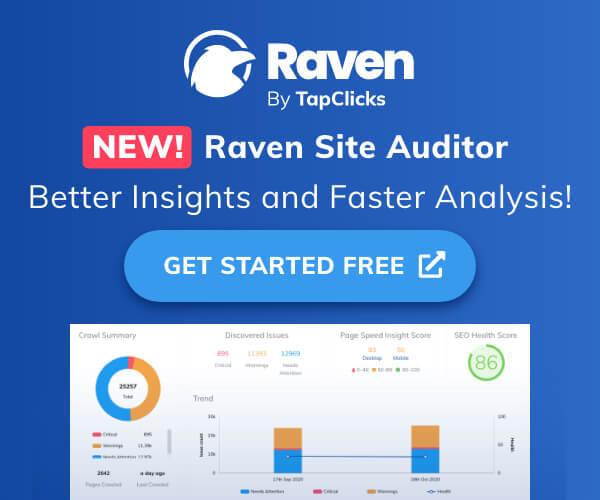
Step 6: Build Backlinks
A strong backlink profile is one of the fastest ways to help your website gain authority, helping you climb the rankings.
Backlinks occur when other websites link to your site, whether that link be to your homepage, a services page, or a blog post. When another site links to you, Google sees that as a small vote of confidence in your site, meaning that other website found your content interesting or informative enough to include a backlink.
We’ve written a great post on how to analyze backlinks with Raven Tools, for those interested in how to best use Raven to accomplish this particular step.
Here are some places you can explore when looking to build your backlink profile:
- Blogs
- Resources pages on other websites
- Review sites
- Wikipedia
- Social media profiles
Because your site is not yet branded, many sources of backlinks aren’t yet open to you. However, you can still create an outreach plan for some backlink sources and work to build a solid profile you can hand over to the site’s renter.
Step 7: Rent It Out
Once you’ve got some solid traffic flowing to the site and you’ve seen some rise in the rankings, it’s time to rent your site out to a local business owner.
Do a bit of research on the local businesses in your niche and geolocation you’ve been targeting. Find businesses that have poor-quality, low-ranking websites, or no websites at all, and give them a call.
Tell them about the great new website you’ve created, and how it comes ready-made with content and a steady stream of traffic and leads. Show the business owner how your offering can greatly benefit their business, and that your rental fee is truly a steal over what building and ranking a site themselves would cost.
If you do not find a buyer among the lower-ranking businesses, try going a little farther up the chain. Sometimes, businesses that rank on the second page of the SERPs understand the value of a high-ranking website but they haven’t been able to crack the front page. It may be easier to make a sale in this crowd.
A Note on Pricing Your Rank and Rent Site:
The price you charge to rent out your site is going to depend greatly on the niche and the overall lifetime value of a lead. If you chose a niche that isn’t highly competitive or has a low lead value, your site will be worth less than a high-competition, high-cost niche. Do some research on your individual niche before making calls to local businesses.
Step Up Your SEO Game with Rank & Rent
The rank and rent model of SEO is gaining ground within the community, as many SEO professionals see the opportunity to practice their skills while making better, easier money than doing straight client work.
While the method isn’t fast and it isn’t fool-proof, by being careful with the type of site you create and working hard to make the site as ready for rental as possible, you can provide yourself with a steady income without having to do daily client SEO work again.
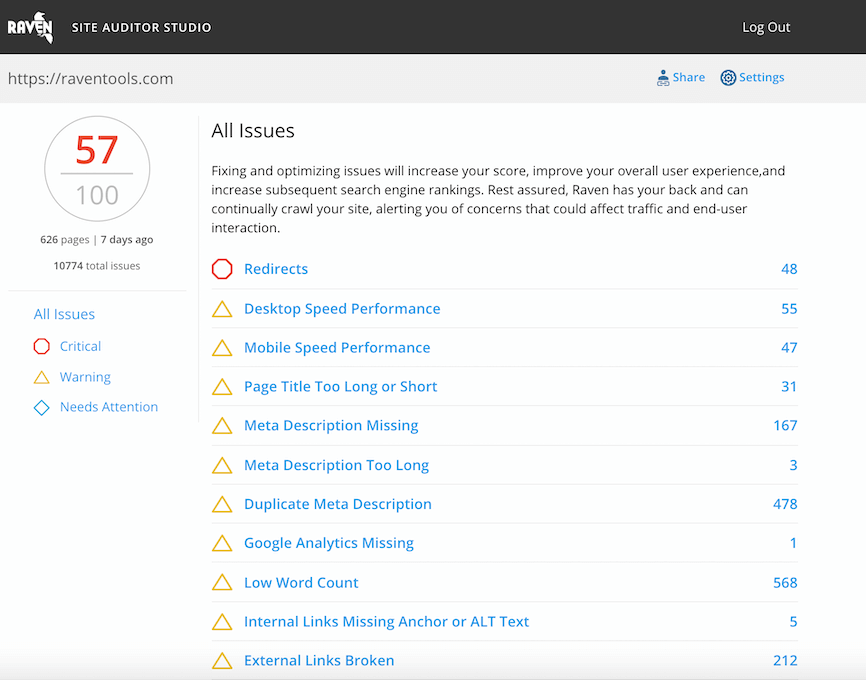
Analyze over 20 different technical SEO issues and create to-do lists for your team while sending error reports to your client.




